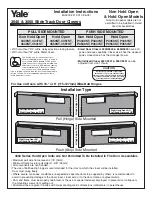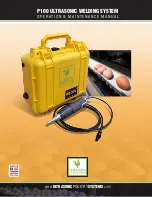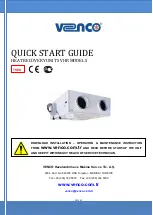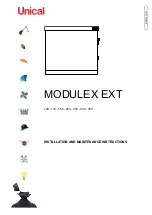
CUTMASTER 152
Manual 0-4987
4T-7 OPERATION
Pressure Setting
Even though the setting is within the specified range,
if the torch does not pilot well the pressure may need
to be reduced.
Lead Angle
The angle between the torch and workpiece depends
on the output current setting and torch travel speed.
The recommended lead angle is 35°. At a lead angle
greater than 45° the molten metal will not be blown
out of the gouge and may be blown back onto the
torch. If the lead angle is too small (less than 35°),
less material may be removed, requiring more pass-
es. In some applications, such as removing welds
or working with light metal, this may be desirable.
35°
Workpiece
Torch Head
Standoff Height
A-00941_AB
Gouging Angle and Standoff Distance
Standoff Distance
The tip to work distance affects gouge quality and
depth. Standoff distance of 1/8 - 1/4 inch (3 - 6
mm) allows for smooth, consistent metal removal.
Smaller standoff distances may result in a severance
cut rather than a gouge. Standoff distances greater
than 1/4 inch (6 mm) may result in minimal metal
removal or loss of transferred main arc.
Slag Buildup
Slag generated by gouging on materials such as car-
bon and stainless steels, nickels, and alloyed steels,
can be removed easily in most cases. Slag does not
obstruct the gouging process if it accumulates to the
side of the gouge path. However, slag build - up can
cause inconsistencies and irregular metal removal if
large amounts of material build up in front of the
arc. The build - up is most often a result of improper
travel speed, lead angle, or standoff height.
4T.06 Mechanized Torch Operation
Cutting With Mechanized Torch
The mechanized torch can be activated by remote
control pendant or by a remote interface device
such as CNC.
1. To start a cut at the plate edge, position the
center of the torch along the edge of the
plate.
Travel Speed
Proper travel speed is indicated by the trail of the
arc which is seen below the plate. The arc can be
one of the following:
1. Straight Arc
A straight arc is perpendicular to the workpiece
surface. This arc is generally recommended
for the best cut using air plasma on stainless or
aluminum.
2. Leading Arc
The leading arc is directed in the same direction as
torch travel. A five degree leading arc is generally
recommended for air plasma on mild steel.
3. Trailing Arc
The trailing arc is directed in the opposite direc-
tion as torch travel.
Standoff Distance
Straight Arc
Trailing Arc
Leading Arc
Direction of Torch Travel
A-02586
Mechanized Torch Operation
Содержание 152 CUTMASTER
Страница 4: ...This Page Intentionally Blank...
Страница 14: ...CUTMASTER 152 GENERAL INFORMATION 1 8 Manual 0 4987 This Page Intentionally Blank...
Страница 22: ...CUTMASTER 152 INTRODUCTION 2T 4 Manual 0 4987 This Page Intentionally Blank...
Страница 32: ...CUTMASTER 152 OPERATION 4 4 Manual 0 4987 This Page Intentionally Blank...
Страница 54: ...CUTMASTER 152 OPERATION 4T 22 Manual 0 4987 This Page Intentionally Blank...
Страница 69: ...CUTMASTER 152 Manual 0 4987 6 5 PARTS LIST A 07994_AB 1 4 2 3 5 6 7 8 9 10 12 11 10 13...
Страница 72: ...CUTMASTER 152 PARTS LIST 6 8 Manual 0 4987 This Page Intentionally Blank...
Страница 77: ...CUTMASTER 152 Manual 0 4987 A 5 APPENDIX This Page Intentionally Blank...
Страница 83: ...This Page Intentionally Blank...
















































